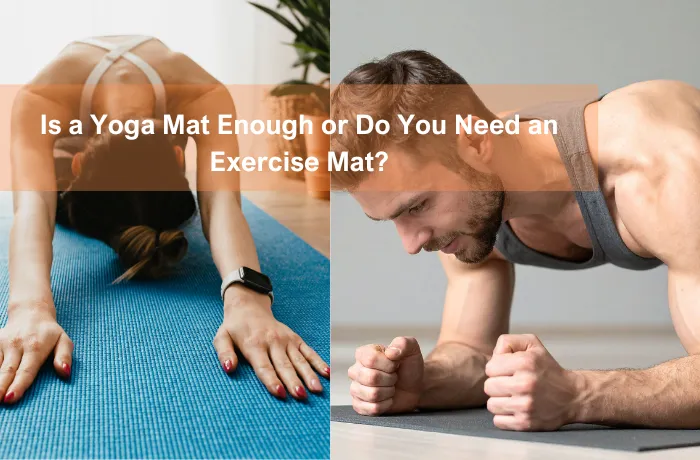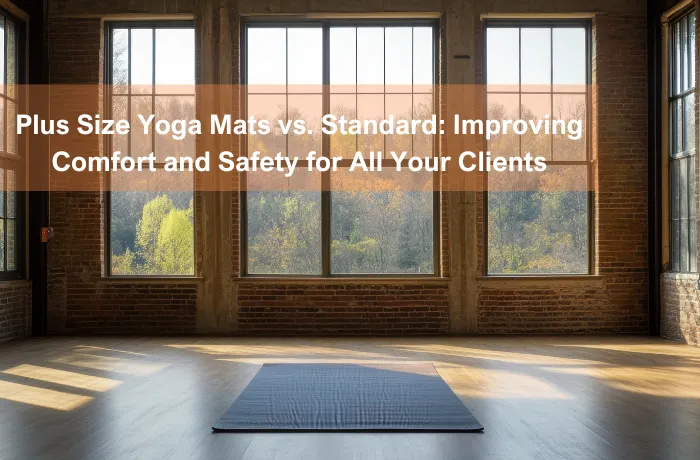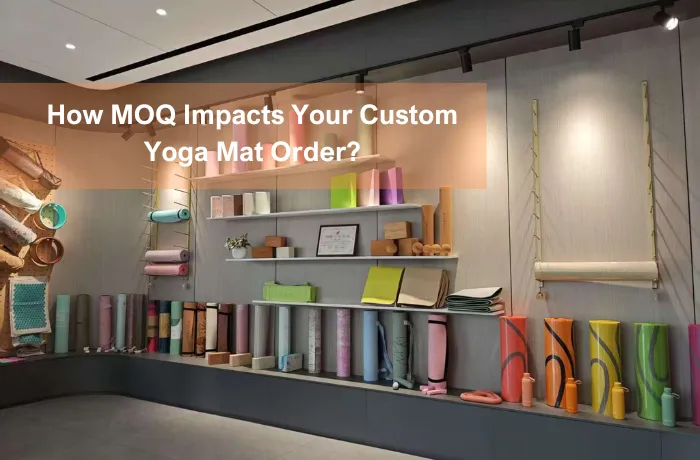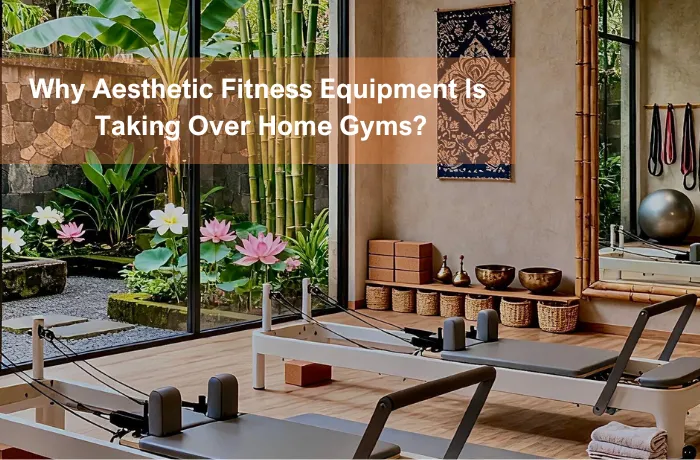You want to start a new fitness routine, but the choice between a yoga mat and an exercise mat leaves you unsure. Comfort matters most to most people, with 85% of yogis saying it is their top reason for picking a mat. You find that a 10mm mat feels soft beneath you, yet it still lets you balance well. Safety and performance also play a big part in your decision. The right mat depends on the type of workout you do and what feels best for you. Popular brands like Manduka, Liforme, and Gaiam offer many options for every need.
Tip: Try standing on different mats before you buy. Notice how your joints feel and how steady you stand.
Key Takeaways
- Pick a yoga mat for gentle activities like yoga, stretching, and meditation. It gives comfort and helps you stay steady.
- Use an exercise mat for hard workouts like HIIT or circuit training. It has more padding to keep your joints safe.
- Think about how thick the mat is. Thick mats soak up more shock, so they are good for hard exercises. Thin mats help you balance better.
- Find a mat that fits your workout style. The right mat makes you feel safe and comfortable when you exercise.
- Check what the mat is made of and how well it grips. Eco-friendly mats like rubber or cork work well and are kinder to the planet.
Quick Answer
Yoga Mat for Low-Impact
You often choose a yoga mat for gentle activities. It works best for yoga, stretching, and meditation. The surface of a yoga mat feels soft but firm. You get enough grip to stop your hands and feet from slipping. This helps you hold poses safely. Many people use a yoga mat for Pilates or light floor exercises as well.
- A yoga mat protects your knees during floor exercises.
- It gives you a non-slip surface, so you stay safe on smooth floors.
- A thinner yoga mat lets you feel the ground better, which helps with balance.
You can roll up a yoga mat and carry it easily. Most yoga mats are light and simple to clean. You will find that a yoga mat suits you if you want comfort and stability for low-impact routines.
Exercise Mat for High-Impact
You need an exercise mat when your workout includes jumping, core work, or high-impact moves. An exercise mat feels thicker and softer than a yoga mat. This extra padding protects your joints when you do sit-ups, push-ups, or burpees. You will notice less strain on your elbows, knees, and back.
An exercise mat absorbs shock better than a yoga mat. You can use it for HIIT, circuit training, or any routine with lots of movement. The surface of an exercise mat often feels less grippy, but it gives you more comfort for longer sessions on the floor.
Note: If you do both yoga and high-impact workouts, you may want both types of mats. Each mat supports your body in different ways.
Difference Between Yoga Mat and Exercise Mat
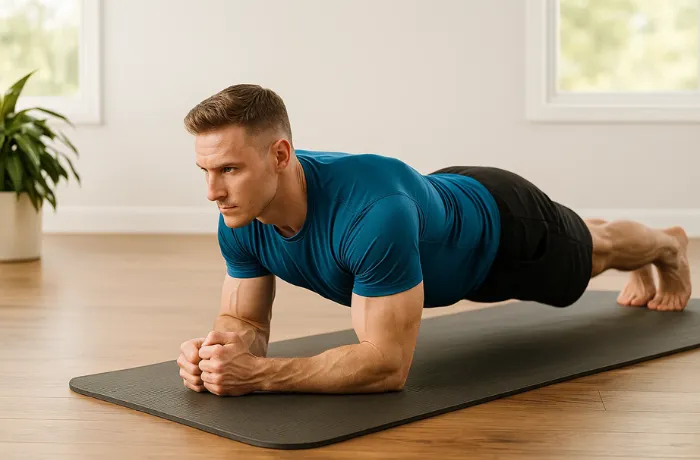
Thickness and Cushioning
You see big differences in thickness and softness. A yoga mat is thinner and feels firm. This helps you stay steady in poses. You can feel the floor under your feet. An exercise mat is thicker and feels softer. The extra padding protects your body during tough moves. Most exercise mats use foams and plastics. These make them thicker and more comfortable.
Here is a table that shows how thickness and purpose change:
| Type of Mat | Typical Thickness | Purpose |
|---|---|---|
| Exercise Mat | 5-7mm (medium) to 8mm-5cm (thick) | Made for harder workouts, gives more support. |
| Yoga Mat | 4-6mm | Thinner to help balance and feel the floor. |
You pick a yoga mat for balance and feeling the ground. You choose an exercise mat for more shock absorption and joint safety.
Material and Grip
The material of each mat changes how it works. Yoga mats can be made from TPE, rubber, or cork. TPE mats last a long time and do not slip. Rubber mats grip well when dry but wear out faster. Cork mats feel different and do not wear out quickly if kept cool. Exercise mats use foams and plastics. These make them thicker and softer.
You want a mat that does not slip for yoga. Some exercise mats have a bottom that stops sliding. The material also changes how easy it is to clean. Closed-cell yoga mats are simple to clean. Open-cell mats need more care because they soak up sweat and dirt.
If you care about the planet, you can find eco-friendly mats. Many yoga mats use PVC, which is bad for nature. Some brands use rubber or cork, which come from plants and break down over time. Mats made from hemp, jute, or cork last longer and are better for the earth.
Tip: Pick a mat with a surface that fits your grip needs. If you sweat a lot, choose a mat with texture or natural rubber.
Intended Use
You see the biggest difference in how you use each mat. A yoga mat is best for yoga and gentle workouts. You use it for stretching, meditation, or light Pilates. An exercise mat is for harder workouts. You use it for HIIT, circuit training, or lots of movement.
- Yoga mats are made for yoga and gentle workouts.
- Exercise mats help with harder workouts.
- Yoga mats work for other gentle exercises, but exercise mats are better for tough workouts.
You pick a mat based on your workout. If you want balance and grip, choose a yoga mat. If you need more softness and support, pick an exercise mat.
Note: Cleaning matters too. Closed-cell yoga mats are easy to clean and stay fresh. Open-cell mats need special cleaning and more care.
Now you know the main differences between these mats. Thickness, material, grip, and use help you choose the right mat.
Yoga Mats or Exercise Mats for Activities
Yoga and Meditation
You often choose a yoga mat for yoga and meditation. The mat gives you comfort and grip, which helps you stay steady in poses. You feel safe when you kneel or sit. Experts say yoga mats or exercise mats with the right thickness and grip work best for these activities. You can see the features in the table below:
| Activity | Key Features |
|---|---|
| Yoga and Pilates | Comfort, grip, thickness |
| Stretching and Flexibility Exercises | Softness, length, eco-friendly options |
A study found that yoga and meditation improve memory, mood, and coping skills. People who used a yoga mat for twelve weeks felt less anxious and more positive. You get better results when you use a mat that supports your body and helps you relax.
Pilates and Stretching
You use an exercise mat for Pilates and stretching. The mat gives you more cushioning and support. You protect your joints and muscles during lunges, planks, and ab workouts. The fitness mat helps you build core strength and improve balance. You also get a full-body workout with dynamic stretching. The benefits include:
- Enhances core strength in your abdomen, chest, and back.
- Offers a gentle option for your joints.
- Improves flexibility and posture.
- Supports pain relief from tight muscles.
You can use an exercise mat for yoga if you want extra softness. Many workout mats suit Pilates and stretching because they are thicker and more comfortable.
HIIT and Floor Workouts
You need a durable exercise mat for HIIT and floor workouts. The mat absorbs shock and protects your body during high-impact moves. You stay safe when you jump, do burpees, or perform circuit training. Trainers recommend workout mats with non-slip surfaces and easy cleaning. You can use compact mats for quick routines or travel. If you ask, “can you use an exercise mat for yoga?” the answer is yes, but you may lose some grip. If you wonder, “can you use a yoga mat for exercise?” you can, but you may need more cushioning for tough workouts.
You choose a fitness mat based on your activity. Yoga mats or exercise mats help you stay comfortable and safe. Pick the mat that matches your routine and body needs.
Safety and Comfort
Joint Protection
You want to keep your joints safe when you exercise. The right mat stops pain in your knees, elbows, and back. Thick mats soak up more shock and lower the force on your joints. You notice this when you do hard workouts or spend time on the floor. A yoga mat gives enough support for gentle moves. For harder routines, you need an exercise mat.
Studies show mat thickness matters a lot. Mats that are 6-8mm thick cut impact by up to 25%. Mats that are 9mm or thicker can absorb 30-40% of impact energy. Thicker mats protect your joints better during exercise. The table below shows how mat thickness helps joint safety for different activities:
| Activity Type | Recommended Thickness | Impact on Joints |
|---|---|---|
| High-Impact Workouts | 13 mm | Soaks up impact, keeps joints safe during jumps |
| Weightlifting | 19-25 mm | Protects the floor and gear, makes less noise |
| Martial Arts | 25-38 mm | Gives padding for falls, absorbs strong impacts |
| General Yoga | 5-8 mm | Extra softness for knee protection |
| Back Pain | 6-8 mm | Supports your spine during floor moves |
| Arthritis | 5-10 mm | Makes joints feel better and keeps you steady |
| Osteoporosis | 8-10 mm | Lowers injury risk during balance poses |
You can see the best thickness for each activity in the chart below:
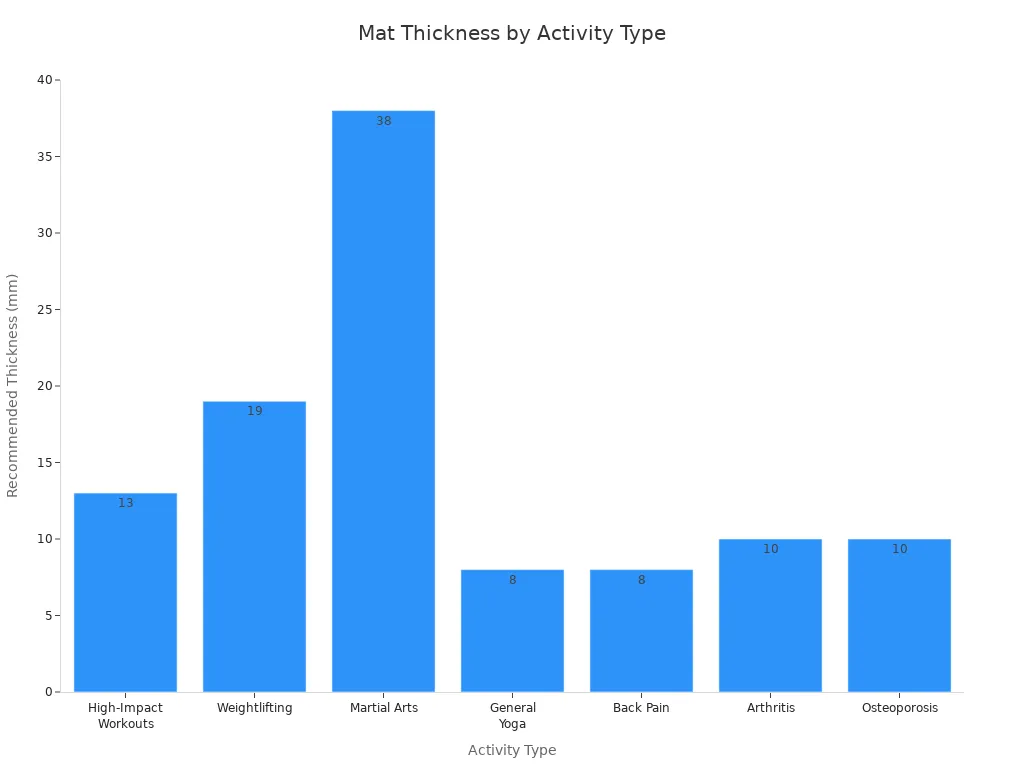
Tip: Pick a mat with the right thickness for your workout. This keeps your joints safe and makes you feel more comfortable.
Injury Prevention
You lower your chance of getting hurt when you use a good mat. New mats use better foam and thickness to soak up shock. Sports doctors found old mats did not protect you well. Now, new rules make sure mats absorb shock well. You stay safer during wrestling, HIIT, or martial arts.
You also need grip and steadiness to stop slips and falls. A yoga mat gives grip for balance moves. An exercise mat has more padding for moves that need extra support. People say mats like BalanceFrom GoCloud feel very comfy for stretching and floor exercises. Retrospec Laguna Yoga Mat gives good grip for yoga, but may not have enough padding for tough workouts.
| Mat Name | Comfort Level for Activities | Key Features |
|---|---|---|
| BalanceFrom GoCloud | Very comfy for stretching and floor exercises | Thick 1-inch foam, soft for joints, strong against heavy things |
| Retrospec Laguna Yoga Mat | Good grip for hard yoga moves | Thin (1/4 inch), great grip, strong materials, may not be soft enough |
You feel the good effects of using a mat every time you exercise. You get comfort, joint safety, and fewer injuries. You enjoy your workout more and worry less about pain or accidents. The right mat helps you move with confidence and keeps you safe.
Choosing the Right Mat
Assess Your Routine
You need to look at your daily exercise habits before choosing the right mat. Think about the type of workouts you do most often. If you practise yoga or meditation, a yoga mat with good grip and the right thickness will help you stay balanced and comfortable. For high-impact routines, such as HIIT or circuit training, an exercise mat with extra cushioning protects your joints.
When you want to know how to buy the best yoga mat or how to buy the best workout mat, consider these important factors:
- Size: Make sure the mat is long and wide enough for your body and movements.
- Thickness: Thicker mats cushion your joints during tough exercises. Thinner mats help you balance better in yoga.
- Traction: A non-slip surface keeps you safe and steady.
- Durability: Choose a mat that can handle regular use.
- Material: PVC is strong and easy to clean. TPE is light and eco-friendly. Rubber absorbs shock well. Foam feels soft and suits gentle routines.
Tip: Match your mat to your main activity for the best support and safety.
Personal Preferences
Your own needs matter when picking a mat. If you have sensitive skin, you may prefer natural materials like rubber, cotton, or jute. If you travel or go to classes, a thinner mat is easier to carry. People with sore knees or joints often choose thicker mats for extra comfort, even if they are less portable.
Fitness experts suggest you compare price and durability. Sometimes, spending more means your mat lasts longer. Look for sales and compare brands to find the best deal. When you know how to buy the best yoga mat or how to buy the best workout mat, you feel more confident in your choice.
Choosing the right mat can boost your motivation. When you enjoy your mat, you are more likely to stick to your routine and reach your fitness goals.
You use a yoga mat for calm things like stretching or meditation. The table below tells you what to check:
| Criteria | Description |
|---|---|
| Thickness | Thicker mats are best for gentle moves and feel softer. |
| Grip | A mat with good grip helps you stay steady in poses. |
| Cushioning | Soft mats keep you safe on hard floors. |
| Material | Each material feels different and lasts a different time. |
You need an exercise mat for tough moves that make you jump or move fast. Always pick a mat that fits your workout. This keeps you safe and comfortable.
Make a smart choice and you will feel good every time you exercise.
FAQ
Can you use a yoga mat for all types of exercise?
You can use a yoga mat for gentle activities like stretching or meditation. For high-impact workouts, you need more cushioning. An exercise mat protects your joints better during jumping or floor routines.
How do you clean your exercise mat?
Wipe your mat with a damp cloth and mild soap. Let it air dry before rolling it up. Some mats allow machine washing, but always check the label first.
What thickness should you choose for your mat?
Choose 4–6mm for yoga and stretching. Pick 10mm or more for HIIT or floor workouts. Thicker mats give more comfort for your joints.
| Activity | Recommended Thickness |
|---|---|
| Yoga | 4–6mm |
| HIIT | 10mm+ |
Do eco-friendly mats work as well as regular mats?
Eco-friendly mats use natural materials like cork or rubber. You get good grip and comfort. These mats last long if you care for them properly.
Can you travel with a thick exercise mat?
Thick mats feel heavy and take up space. You may find it hard to carry them. For travel, choose a lightweight mat that rolls up easily.

